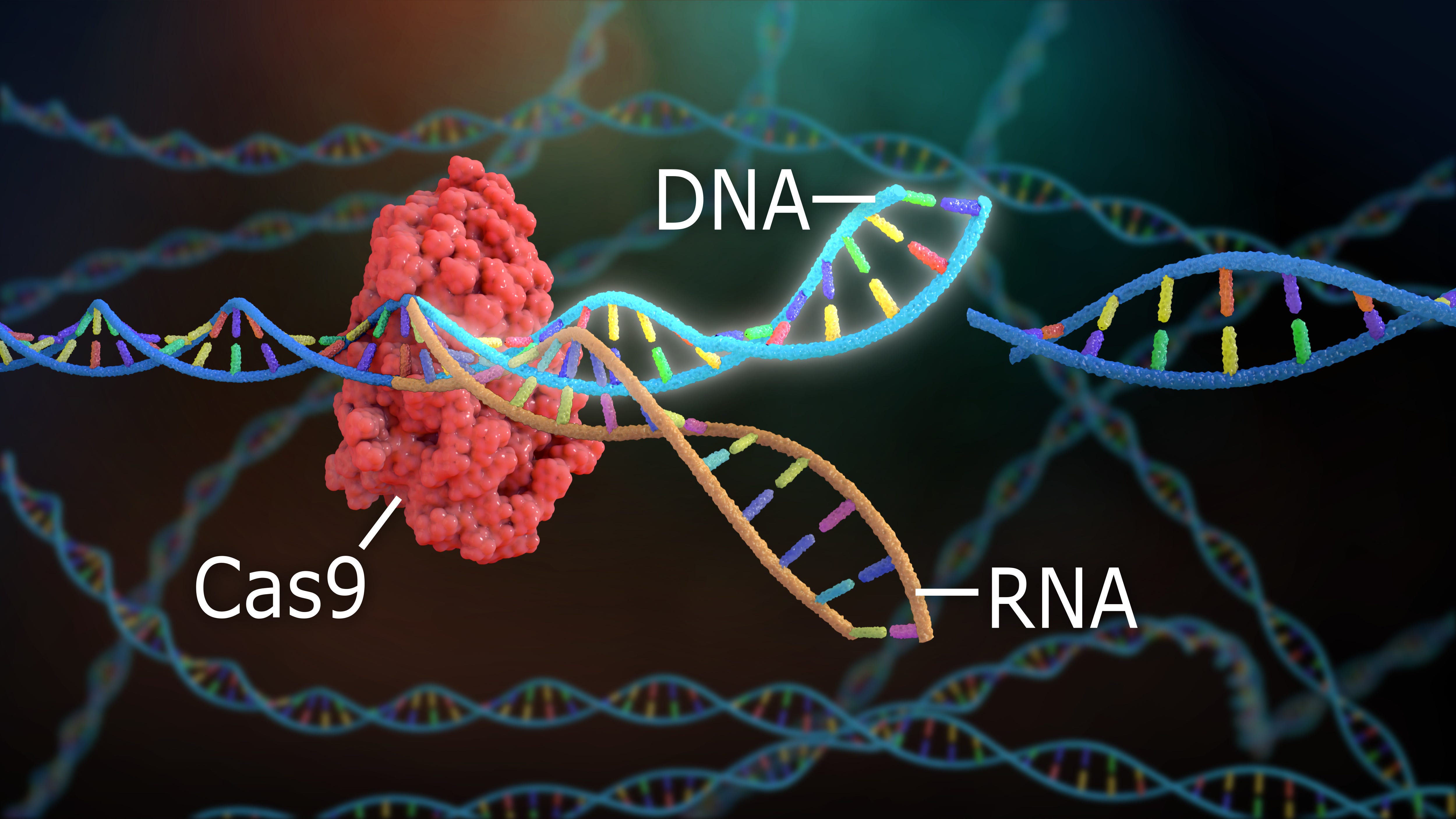Gene Editing
 |
| IMAGE:GIPHY |
CRISPR gene editing is a revolutionary technology that allows scientists to precisely alter DNA sequences in living organisms. CRISPR, which stands for Clustered Regularly Interspaced Short Palindromic Repeats, is a natural defense mechanism found in bacteria that helps them fend off viruses. Researchers have adapted this system for use in genetic engineering.
Here's a basic overview of how CRISPR works:
 |
| IMAGE:IMRO |
Guide RNA (gRNA): A custom RNA sequence that matches the target DNA sequence is created. This RNA acts as a guide for the Cas9 enzyme.
Cas9 Enzyme: This protein acts like molecular scissors that cut the DNA at the location specified by the guide RNA.
DNA Repair: Once the DNA is cut, the cell's natural repair mechanisms kick in. Scientists can exploit these repair processes to add, delete, or replace DNA segments.
CRISPR has numerous applications, including:
- Medicine: Potential treatments for genetic disorders, cancer, and infectious diseases.
- Agriculture: Development of crops that are more resistant to pests, diseases, and environmental conditions.
- Research: Creation of model organisms to study gene function and disease mechanisms.
Would you like more detailed information on a specific aspect of CRISPR gene editing?

Yes, want to know more about it
ReplyDeleteInteresting...
ReplyDeleteNow we can decide the features of our future kids!
ReplyDeleteWow
ReplyDeleteQuiet Interesting
ReplyDeleteGreat overview of CRISPR! I'm particularly interested in its applications in medicine.
ReplyDeleteThe potential for treating genetic disorders with CRISPR is incredibly promising.
ReplyDeletescientists working to minimize these unintended changes to DNA
ReplyDeleteImpressive technology!
ReplyDeleteThis is a fascinating read!
ReplyDeleteGreat overview of CRISPR! I'm particularly interested in its applications in agriculture.
ReplyDeleteThe potential for treating genetic disorders with CRISPR is incredibly promising.
ReplyDeleteFantastic explanation of CRISPR!
ReplyDeleteI'm curious about the accessibility of CRISPR technology.
ReplyDeleteI'm really interested in the ethical implications of CRISPR.
ReplyDeleteThe potential of CRISPR in eradicating genetic diseases is amazing.
ReplyDeleteIt's amazing how far genetic engineering has come.
ReplyDeleteThanks for the article! I'm always impressed by the advancements in gene editing.
ReplyDeleteCRISPR's applications in research are opening up so many new possibilities.
ReplyDeleteI'm excited about the potential for CRISPR in medicine. The future looks bright.
ReplyDeleteFantastic explanation of CRISPR! It's incredible what scientists can do today.
ReplyDeleteCRISPR is definitely a hot topic in the scientific community. Very informative post.
ReplyDeleteThis article is very informative! CRISPR's potential is truly remarkable.
ReplyDelete